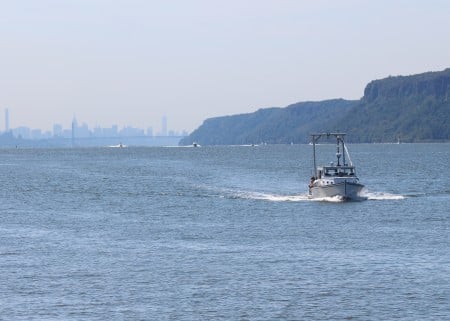Basics

The Hudson River is not your typical river. For about half its length, the Hudson is actually a tidal estuary, where salt water from the ocean combines with fresh water from northern tributaries. The Hudson is tidal from the mouth of the Hudson in New York Harbor to the Federal Dam in Troy, a distance of about 153 miles.
The “salt front” of the estuary – where the salty and then brackish water from the ocean is blocked by fresh water descending from the Hudson’s watershed – can range from the Tappan Zee Bay near Tarrytown and Nyack in springtime, to Newburgh Bay in the summer, to farther north during droughts.
Because the Hudson River is a tidal estuary, meaning it ebbs and flows with the ocean tide, it supports a biologically rich environment, making it an important ecosystem for various species of aquatic life. For many key species, it provides critical habitats and essential spawning and nursery grounds.
To learn more about the unique regions of the Hudson River, take A Hudson River Journey.

